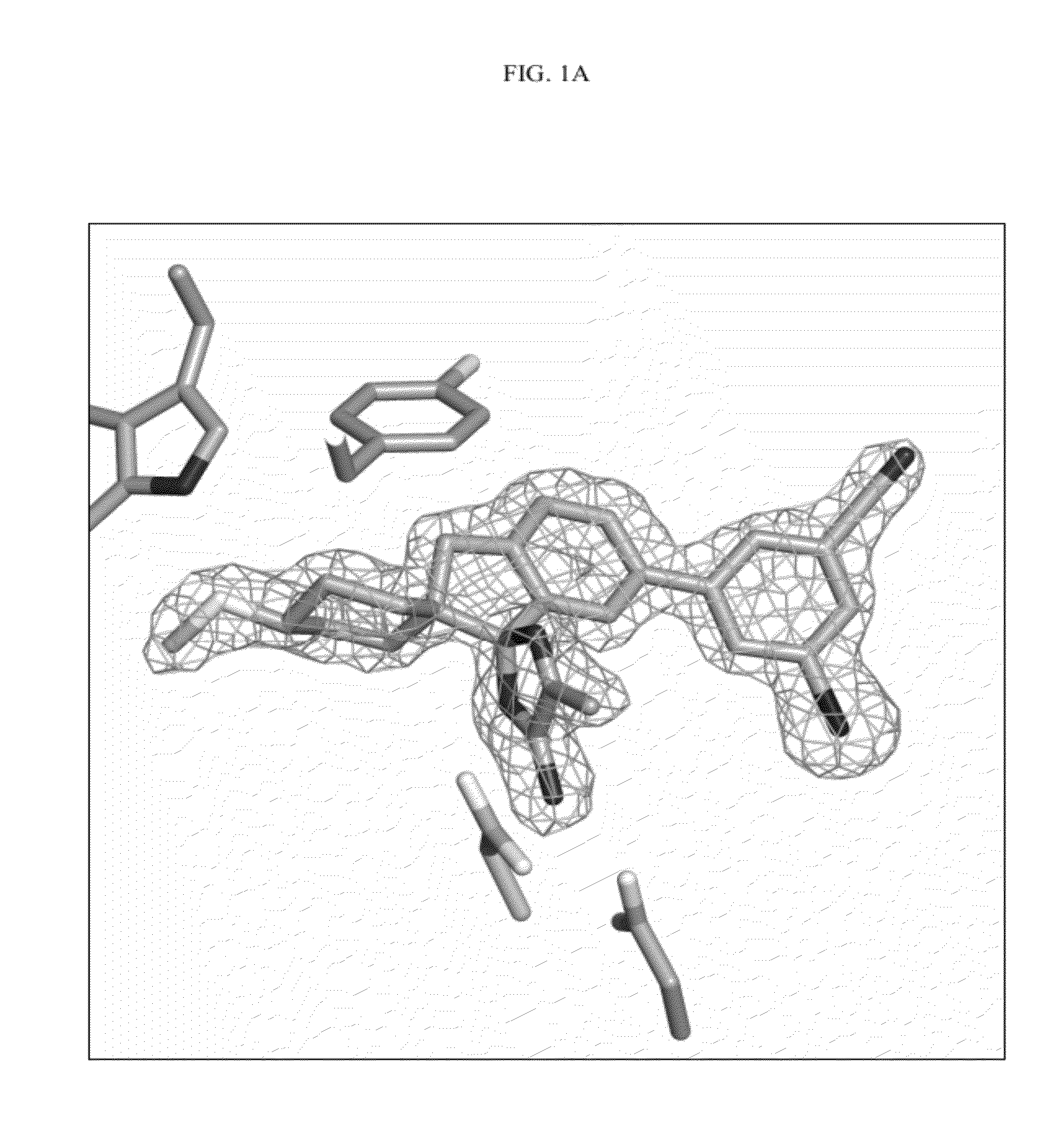Compounds and their use as BACE Inhibitors
a technology of compound and bace inhibitor, which is applied in the direction of drug composition, biocide, extracellular fluid disorder, etc., can solve the problems of a plethora of deleterious effects on neuronal function
- Summary
- Abstract
- Description
- Claims
- Application Information
AI Technical Summary
Benefits of technology
Problems solved by technology
Method used
Image
Examples
example 1
6-(3,5-Dichlorophenyl)-5′-methylspiro[chroman-4,2′-imidazol]-4′-amine
[0514]
[0515]6-Bromo-5′-methylspiro[chroman-4,2′-imidazol]-4′-amine (73 mg, 0.25 mmol, Intermediate 4), 3,5-dichlorophenylboronic acid (95 mg, 0.50 mmol) and K2CO3 (83 mg, 0.60 mmol) were mixed in dioxane (2 mL) and degassed by passing nitrogen through for 5 min. Then (1,1′-bis(diphenyl-phosphino)ferrocene)-dichloropalladium(II) (10 mg, 0.01 mmol) was added and the mixture was heated in a sealed vial at 100° C. overnight. (1,1′-Bis(diphenylphosphino)ferrocene)-dichloro-palladium(II) (10 mg, 0.01 mmol) was added and heating continued in a microwave oven at 130° C. for 2×1 h. Purification by preparative HPLC gave the title compound (13 mg, 14% yield): 1H NMR (400 MHz, CDCl3) δ ppm 2.04-2.30 (m, 2H), 2.38 (s, 3H), 4.50-4.69 (m, 2H), 4.88 (br s, 2H), 6.69 (s, 1H), 6.98 (d, 1H), 7.22-7.35 (m, 4H); MS (ES+) m / z 360 [M+H]1.
example 2
6-(5-Chloropyridin-3-yl)-5′-methylspiro[chroman-4,2′-imidazol]-4′-amine
[0516]
[0517]6-Bromo-5′-methylspiro[chroman-4,2′-imidazol]-4′-amine (60 mg, 0.20 mmol, Intermediate 4), 5-chloropyridin-3-ylboronic acid (62 mg, 0.40 mmol) and 2M K2CO3 (aq, 0.20 mL, 0.41 mmol) were mixed in dioxane (5 mL) and degassed by passing nitrogen through for 5 min. Then (1,1′-bis(diphenylphosphino)ferrocene)-dichloropalladium(II) (8 mg, 10 μmol) was added and the mixture was heated in a microwave oven at 130° C. for 1 h. Purification by preparative chromatography HPLC gave the title compound (42 mg, 63% yield): 1H NMR (400 MHz, CDCl3) δ ppm 2.17 (m, 2H), 2.37 (s, 3H), 4.59 (m, 2H), 5.04 (br s, 2H), 6.73 (d, 1H), 7.01 (d, 1H), 7.34 (dd, 1H), 7.70 (m, 1H), 8.45 (m, 1H), 8.55 (m, 1H); MS (ES+) m / z 327 [M+H]+.
example 3
6-(3,5-Difluorophenyl)-5′-methylspiro[chroman-4,2′-imidazol]-4′-amine
[0518]
[0519]6-Bromo-5′-methylspiro[chroman-4,2′-imidazol]-4′-amine (Intermediate 4, 0.10 g, 0.34 mmol), 3,5-difluorophenylboronic acid (0.11 g, 0.68 mmol) and 2M K2CO3 (aq., 0.34 mL, 0.69 mmol) were mixed in dioxane (3 mL) and degassed by passing through nitrogen for 5 min. Then (1,1′-bis(diphenylphosphino)ferrocene)-dichloropalladium(II) (14 mg, 20 μmol) was added and the mixture was heated in a microwave oven at 130° C. for 1 h. Purification by preparative chromatography gave the title compound (17 mg, 15% yield): 1H NMR (400 MHz, CDCl3) δ ppm 2.25 (m, 2H), 2.41 (s, 3H), 4.57 (m, 2H), 6.66-6.86 (m, 2H), 6.89-7.05 (m, 3H), 7.38 (d, 1H), 8.1-9.0 (br m, 2H); MS (ES+) m / z 328 [M+H]+.
PUM
| Property | Measurement | Unit |
|---|---|---|
| temperature | aaaaa | aaaaa |
| temperature | aaaaa | aaaaa |
| temperature | aaaaa | aaaaa |
Abstract
Description
Claims
Application Information
 Login to View More
Login to View More - R&D
- Intellectual Property
- Life Sciences
- Materials
- Tech Scout
- Unparalleled Data Quality
- Higher Quality Content
- 60% Fewer Hallucinations
Browse by: Latest US Patents, China's latest patents, Technical Efficacy Thesaurus, Application Domain, Technology Topic, Popular Technical Reports.
© 2025 PatSnap. All rights reserved.Legal|Privacy policy|Modern Slavery Act Transparency Statement|Sitemap|About US| Contact US: help@patsnap.com



